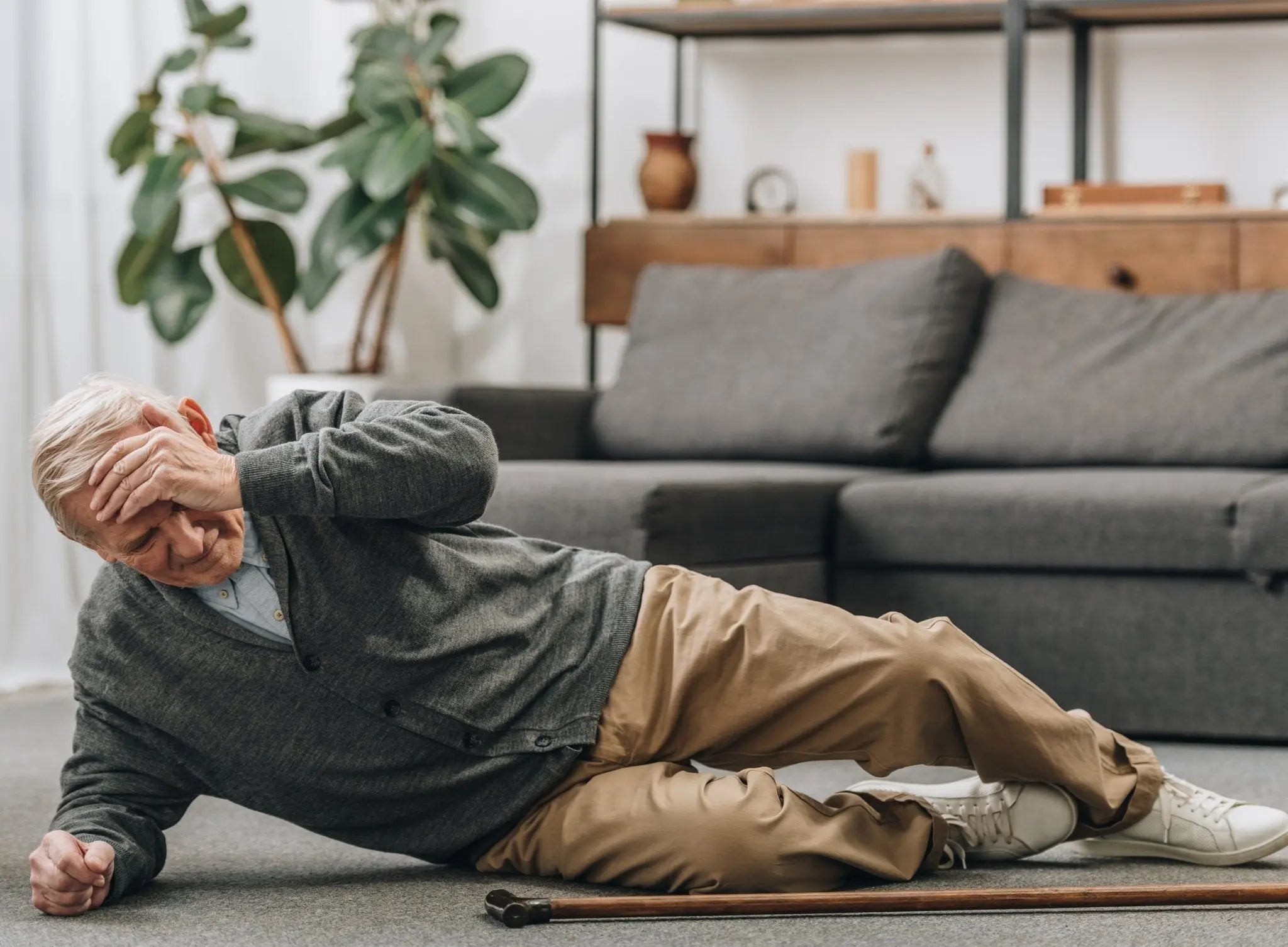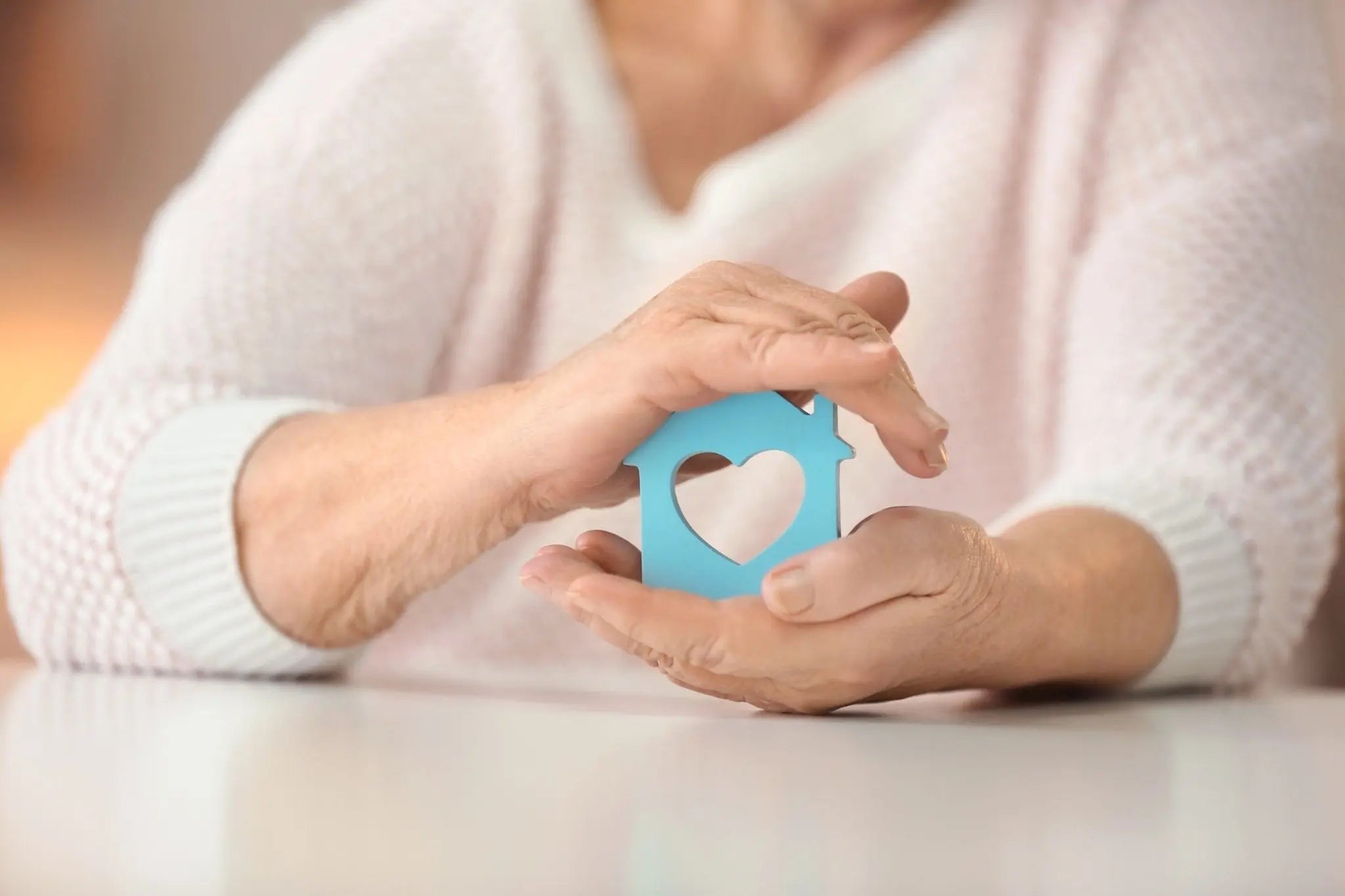Staying Upright - Fall Monitoring and Prevention
Every year 1 in 4 older adults will experience a fall.
Fall monitoring and prevention are important topics to consider in older people and those with disabilities. Physical changes, health conditions, and sometimes the medications used to treat those conditions increase the risk of falling. Falls are a leading cause of injury among older adults. Still, the fear of your loved-one falling doesn't need to rule your life.
Who Should Use a Fall Monitoring Device?
• The Elderly
• Anyone who is unsteady on their feet
• Those who have a history of falls
What are the Common Causes of Falls?
• Poor balance and muscle weakness - As your loved ones age, their muscles lose their tone, making it harder to stay balanced.
• Impaired vision - The decreased ability to see where one is going is a fall risk factor that increases with age. Several eye disorders can cause vision impairment, including cataracts and glaucoma.
• Poor hearing - Hearing loss can be a fall risk factor because it makes your loved one more likely to misstep on the stairs or stumble while walking.
• Medications, including over-the-counter drugs - Up to 50 percent of older adults take four or more prescription and nonprescription medications daily. Ask their doctor about possible fall risks of their medications.
• Medical conditions, such as Parkinson's disease and stroke - Some fall risk factors are related to specific medical conditions. Conditions that affect the brain or nervous system fall into this category — for example, Alzheimer's disease and other forms of dementia and diabetes complications.
• Poor footwear - Poor footwear, such as high heels or ill-fitting shoes, can increase fall risk by making it harder to walk safely.
• Foot problems - Many foot problems can lead to falls, such as bunions, corns, hammertoes, and flat feet.
• Environmental hazards in your loved one's living environment - Environmental fall risk factors include poor lighting, throw rugs, clutter, and anything that makes it hard to walk safely.
• Low blood pressure - Low blood pressure can cause dizziness or lightheadedness, leading to falls if they occur while getting out of bed or walking around.
How Do You Prevent Falls?
Falls can be deadly to the elderly, so fall prevention and fall monitoring are essential for those who care about their loved ones. Prevention is always better than treatment, but how do you prevent falls? Here are some fall prevention tips that may help:
• Regular exercise - Regular exercise, especially walking and balance exercises such as tai chi, can help reduce fall risk. If your loved one is not fit or hasn't been active recently, make sure they start slowly with a few minutes of walking each day, only after consulting with a doctor.
• Regular visual checkups - Make sure your loved one visits the eye doctor for an annual exam, and more often if they have diabetes or other conditions that put them at higher fall risk due to vision problems.
• Encourage them to wear glasses – if their eye doctor has prescribed glasses for distance, make sure they are keeping them on. They may also benefit from using reading glasses when performing tasks such as working on the computer or reading the newspaper close up — but make sure they don't use them while driving or walking around outside without talking with their eye care professional.
• Regular hearing checks - Hearing loss is a fall risk factor that increases with age. If your loved one's hearing isn't what it should be, make sure they use assistive devices for fall prevention such as hearing aids or captioned telephones — and get any other help they may need from their audiologist or health care provider.
• Wearing appropriate shoes - Make fall prevention part of your loved one's footwear strategy by encouraging them to wear sensible shoes inside the house and outside if possible. The best shoes to wear for fall prevention are sturdy and have nonskid soles. Avoid high heels, slippers without rubber soles, loose sandals or shoes, and stockings that are easy to snag or tear.
• Use assistive devices as needed - If your loved one has difficulty balancing, encourage them to use a walker or cane for extra stability when walking. If they are unsteady on their feet because of an illness or injury, ask their health care provider about using a wheelchair full time or just for short periods when they need it.
• Fall prevention assistive devices - There are also many types of fall prevention assistive devices on the market today, such as bed rails, grab bars in the bathroom, and raised toilet seats — ask your loved one's health care provided what is best for them.
• Remove hazards from your loved one's home environment - Take a good look around their house and get rid of any obstacles or risks that could cause them to fall. This includes cords and wires on the floor, low furniture, throw rugs, and clutter. - (will later include a link to In-Home Safety Blog)
• Make sure your loved ones drink plenty of fluids daily - especially if they take medications that can cause dehydration.
• Take medications exactly as prescribed - Many medications can increase fall risk, especially if your loved one is not used to taking them. Ask their health care provider or pharmacist whether any of the medications they're taking could make them more likely to fall.
• Fall Monitoring Systems - There are many companies offering home fall monitoring systems. But not all fall monitoring systems are created equally. Most fall monitors come with high monthly costs, send false alarms, and require wiring to their base unit. Some fall monitoring systems require the user to wear a device such as a pedometer, which can be cumbersome; others use sensors placed around the home to detect movement.
What Features should A Smart Fall Monitor Have?
- A simple press of a button alerts caregivers' mobile devices
- It can easily be worn as necklaces offering freedom and flexibility
- A Wireless connection to its Hub
- 24/7 support monitoring capabilities
- An affordable professional support option
- The ability to combine an alert button and video monitoring for fall prevention
- Smart App Friendly Capable of being integrated with other Home monitoring solutions
Falls are a leading cause of injury, disability, and death among older adults. With the right tools in place to monitor for falls, you can protect your loved ones from these risks.
MOBI offers home and health monitoring solutions that make life easier. These include a smart wireless fall monitoring system, sensors, camera monitoring, and more. All MOBI products can be integrated through the MOBI smart app and grow with your family.
MOBI's Smart Wireless Fall Monitoring System is also available at Walmart!
Reach out to us today on Facebook or email us at service@getmobi.com. We are happy to answer any questions you have on how home and health monitoring can assist you in your day to day life.




1 comment
Dilip Kumar Sah
Me job karna hai
Leave a comment
This site is protected by reCAPTCHA and the Google Privacy Policy and Terms of Service apply.